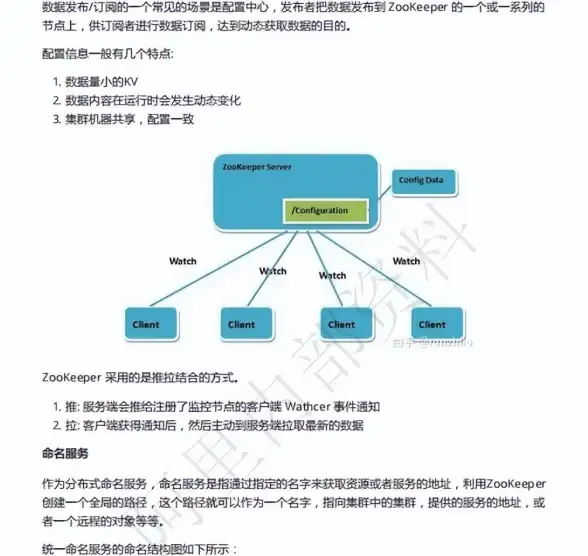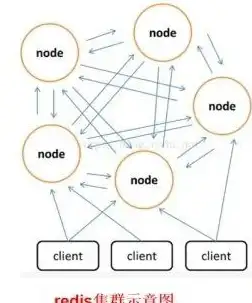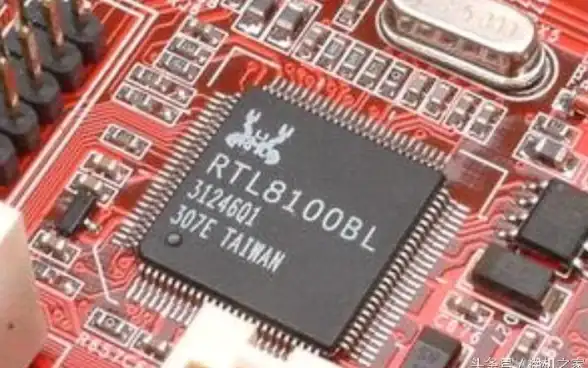Redis原理 C语言实现 用C语言如何开发Redis功能,C怎么实现redis核心机制
- 问答
- 2025-08-03 16:42:40
- 3
Redis原理与C语言实现:从核心机制到功能开发
当C语言遇见高性能缓存
想象这样一个场景:你的电商网站正在经历"黑色星期五"的流量洪峰,每秒数万次的商品查询请求让数据库不堪重负,这时,一个用C语言编写的高性能内存数据库——Redis,像超级英雄般登场,将热点数据缓存到内存中,将响应时间从几百毫秒降到几毫秒,这就是Redis的魅力,而它的力量源泉,正是来自C语言的高效实现。
Redis核心架构解析
Redis之所以能如此高效,关键在于它的核心设计理念:
- 单线程事件循环:Redis采用单线程处理命令,避免了多线程的锁竞争开销,配合非阻塞I/O实现高并发
- 全内存操作:数据主要存储在内存中,仅在持久化时涉及磁盘I/O
- 高效数据结构:针对不同场景优化的底层数据结构实现
// Redis主事件循环简化示例
void aeMain(aeEventLoop *eventLoop) {
eventLoop->stop = 0;
while (!eventLoop->stop) {
aeProcessEvents(eventLoop, AE_ALL_EVENTS);
}
}
Redis核心数据结构C实现
动态字符串SDS
Redis没有直接使用C语言的char数组,而是实现了更高效的SDS(Simple Dynamic String):
struct sdshdr {
int len; // 已使用长度
int free; // 剩余空间
char buf[]; // 实际字符串
};
这种设计实现了O(1)时间复杂度的长度获取,同时避免了缓冲区溢出。
字典实现
Redis的键值存储核心是一个哈希表,采用渐进式rehash策略:

typedef struct dict {
dictType *type; // 类型特定函数
void *privdata; // 私有数据
dictht ht[2]; // 两个哈希表,用于rehash
long rehashidx; // rehash进度,-1表示未进行
} dict;
当哈希表需要扩容时,Redis会逐步将ht[0]的元素迁移到ht[1],避免一次性rehash导致的性能抖动。
跳跃表实现
有序集合(ZSET)的核心数据结构是跳跃表,它能在O(logN)时间复杂度内完成查找:
typedef struct zskiplistNode {
robj *obj; // 成员对象
double score; // 分值
struct zskiplistNode *backward; // 后退指针
struct zskiplistLevel {
struct zskiplistNode *forward; // 前进指针
unsigned int span; // 跨度
} level[]; // 层级数组
} zskiplistNode;
Redis网络模型C实现
Redis基于事件驱动模型,使用I/O多路复用处理大量连接:
// 创建事件循环
aeEventLoop *aeCreateEventLoop(int setsize) {
aeEventLoop *eventLoop;
eventLoop = zmalloc(sizeof(*eventLoop));
// 初始化事件处理器数组
eventLoop->events = zmalloc(sizeof(aeFileEvent)*setsize);
// 初始化已触发事件数组
eventLoop->fired = zmalloc(sizeof(aeFiredEvent)*setsize);
// 设置事件处理器数量上限
eventLoop->setsize = setsize;
// 初始化时间事件链表
eventLoop->timeEventHead = NULL;
return eventLoop;
}
Redis会根据操作系统选择最高效的I/O多路复用实现(epoll/kqueue/select)。

用C语言开发Redis功能实战
让我们用C语言为Redis添加一个简单的"计数器"命令:
定义命令
#include "server.h"
void incrbyfloatCommand(client *c) {
long double increment, value;
robj *o;
// 获取增量参数
if (getLongDoubleFromObjectOrReply(c,c->argv[2],&increment,NULL) != C_OK) return;
// 获取当前值对象
if ((o = lookupKeyWrite(c->db,c->argv[1])) == NULL) {
// 键不存在则创建
o = createStringObjectFromLongDouble(0,0);
dbAdd(c->db,c->argv[1],o);
} else {
// 检查类型
if (checkType(c,o,OBJ_STRING)) return;
// 转换现有值为long double
if (getLongDoubleFromObject(o,&value) == C_ERR) {
addReplyError(c,"value is not a valid float");
return;
}
}
// 执行加法
value += increment;
// 保存新值
setStringObjectAndReport(c,o,value);
// 返回结果
addReplyLongDouble(c,value);
}
注册命令
在server.c的redisCommandTable数组中添加:
struct redisCommand redisCommandTable[] = {
// ...其他命令
{"incrbyfloat",incrbyfloatCommand,3,
"write fast @string",
0,NULL,1,1,1,0,0}
// ...其他命令
};
编译测试
make ./redis-server
然后在客户端测试新命令:
0.0.1:6379> set counter 10
OK
127.0.0.1:6379> incrbyfloat counter 3.5
"13.5"Redis持久化机制实现
Redis提供两种持久化方式,都是用C语言实现的:

RDB持久化
// RDB保存核心函数
int rdbSave(char *filename) {
FILE *fp;
rio rdb;
// 创建临时文件
fp = fopen(tmpfile,"w");
if (!fp) return C_ERR;
// 初始化I/O接口
rioInitWithFile(&rdb,fp);
// 写入魔数版本
snprintf(magic,sizeof(magic),"REDIS%04d",REDIS_RDB_VERSION);
if (rdbWriteRaw(&rdb,magic,9) == -1) goto werr;
// 遍历数据库写入键值对
for (j = 0; j < server.dbnum; j++) {
// 写入数据库选择器
if (rdbSaveType(&rdb,RDB_OPCODE_SELECTDB) == -1) goto werr;
if (rdbSaveLen(&rdb,j) == -1) goto werr;
// 写入数据库字典中的所有键值对
dict *d = server.db[j].dict;
dictIterator *di = dictGetIterator(d);
while((de = dictNext(di)) != NULL) {
// 保存键值对
if (rdbSaveKeyValuePair(&rdb,de->key,de->val,j) == -1) goto werr;
}
}
// 写入EOF标记
if (rdbSaveType(&rdb,RDB_OPCODE_EOF) == -1) goto werr;
// 同步到磁盘
fflush(fp);
fsync(fileno(fp));
fclose(fp);
// 重命名为正式文件
rename(tmpfile,filename);
return C_OK;
}
AOF持久化
AOF以日志形式记录每个写操作,核心实现包括:
// AOF写入函数
void feedAppendOnlyFile(struct redisCommand *cmd, int dictid, robj **argv, int argc) {
sds buf = sdsempty();
// 选择正确的数据库
if (dictid != server.aof_selected_db) {
char seldb[64];
snprintf(seldb,sizeof(seldb),"%d",dictid);
buf = sdscatprintf(buf,"*2\r\n$6\r\nSELECT\r\n$%lu\r\n%s\r\n",
(unsigned long)strlen(seldb),seldb);
server.aof_selected_db = dictid;
}
// 将命令转换为AOF格式
buf = catAppendOnlyGenericCommand(buf,argc,argv);
// 写入AOF缓冲区
server.aof_buf = sdscatlen(server.aof_buf,buf,sdslen(buf));
sdsfree(buf);
}
Redis内存管理技巧
Redis通过多种方式优化内存使用:
- 内存分配器:默认使用jemalloc,减少内存碎片
- 对象共享:对小型整数等常用值进行共享
- 编码优化:根据数据大小自动选择最优编码方式
// Redis对象系统核心结构
typedef struct redisObject {
unsigned type:4; // 对象类型(STRING/LIST/HASH等)
unsigned encoding:4; // 编码方式
unsigned lru:LRU_BITS; // LRU时间或LFU计数
int refcount; // 引用计数
void *ptr; // 指向实际数据的指针
} robj;
性能优化实战技巧
- 批量操作:使用pipeline减少网络往返
- 连接复用:使用连接池避免频繁创建连接
- 合理设置超时:防止连接泄漏
- 键名设计:简短且有意义的键名减少内存占用
// 使用pipeline批量执行命令示例
redisReply *reply;
redisAppendCommand(context,"SET foo bar");
redisAppendCommand(context,"GET foo");
redisGetReply(context,&reply); // SET命令回复
freeReplyObject(reply);
redisGetReply(context,&reply); // GET命令回复
printf("GET foo: %s\n", reply->str);
freeReplyObject(reply);
通过C语言,Redis实现了极致的性能与高效的内存利用,从精心设计的数据结构到高效的事件循环模型,从灵活的内存管理到可靠的持久化机制,Redis的每一个组件都体现了C语言系统编程的艺术,理解这些底层实现原理,不仅能帮助我们更好地使用Redis,也为用C语言开发高性能系统提供了绝佳范例。
本文由 塞阳 于2025-08-03发表在【云服务器提供商】,文中图片由(塞阳)上传,本平台仅提供信息存储服务;作者观点、意见不代表本站立场,如有侵权,请联系我们删除;若有图片侵权,请您准备原始证明材料和公证书后联系我方删除!
本文链接:https://vps.7tqx.com/wenda/527230.html


![Oracle报错|故障修复 ORA-48321:ADR Relation string]not found 远程处理及ORACLE报错修复](https://vps.7tqx.com/zb_users/upload/2025/07/20250728103724175367024443542.jpg)






发表评论